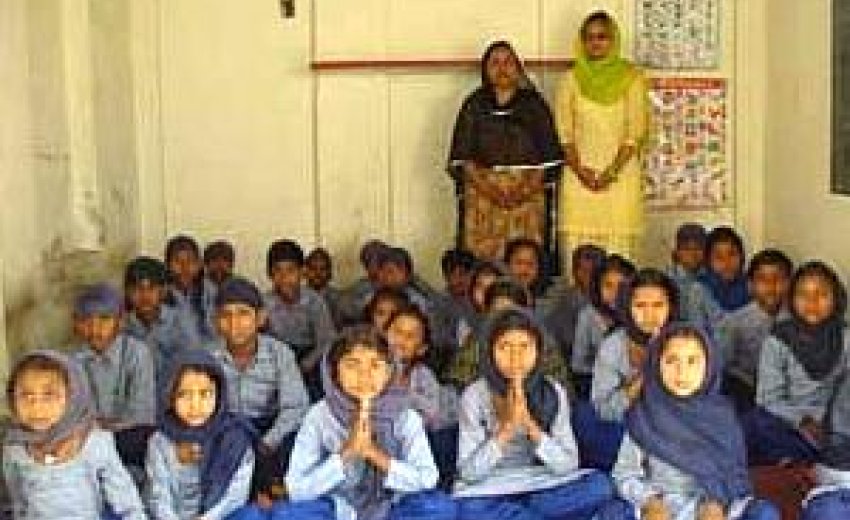The literacy percentage of Sikhs across India as per Census 2001 was 60.55 percent. The percentage of Jains was 84.1%, Christians 69.46%, Buddhists 62.16%, Hindus 54.92% and Muslims 48.05%. The percentage of literacy is not a race amongst communities, but Sikhs need to buckle up their efforts for cent per cent literacy.
The Sikhs outside Punjab in the country and abroad are better in Sikhi appearance, education, maintaining good social relations and status. In Punjab the Sikhs have a low literacy percentage of 58.67, whereas the literacy rate among Jains is 86.10 %, Hindus 64.79 %, Buddhists 62.94 %.
Furthermore, India's Planning Commission observes that according to economic factors of growth, as per their latest assessment in the Eleventh Plan document, there is the disturbing truth that economically Punjab would be a laggard state, at the bottom in terms of growth during the Eleventh Plan [2007-2012]. Obviously, amongst the population in Punjab, Sikhs will be hurt most.
Minority Status of Sikhs
The Section 2 (C) of the National Commission for Minorities Act 1992 of the Indian Parliament has notified Muslims, Sikhs, Christians, Buddhists, and Zoroastrians (Parsis) as minority communities. The Sikhs equally hold the status of minority community at par even in Punjab and all other parts of the country.
According to the statement made on the floor of Indian Parliament by Mr. Abdul Rehman Antulay, minister for minority affairs, during the year 2007-2008, the Sikh community had a quota of 2,540 (Government of India allots the quota in proportionate to the population) but only 50 was the number of Sikh beneficiaries but not even a single application has come from the State of Punjab.
 Apart from the Government of India, almost all State Governments and Union Territories also grant educational scholarships to minorities. Deserving Sikhs can apply for both, but one individual is eligible for only one scholarship. The details of the scheme and applications format are available on respective websites of the State and Union Minorities’ Welfare Department, Minorities’ Finance Corporation or by any other name. Like the Muslims, who propagate about such facilities at benefits after Namaz in mosques, Sikhs too need to take this up in Gurdwaras, especially in areas where they are economically weak.
Apart from the Government of India, almost all State Governments and Union Territories also grant educational scholarships to minorities. Deserving Sikhs can apply for both, but one individual is eligible for only one scholarship. The details of the scheme and applications format are available on respective websites of the State and Union Minorities’ Welfare Department, Minorities’ Finance Corporation or by any other name. Like the Muslims, who propagate about such facilities at benefits after Namaz in mosques, Sikhs too need to take this up in Gurdwaras, especially in areas where they are economically weak.
I request one and all to kindly promote the awareness and motivate our people to apply for the benefits, wherever they are eligible in the categories of (1) Minority, (2) Backward, (3) Scheduled Caste and (4) Scheduled Tribe. There is another advantage for those Scheduled Cates and Scheduled Tribes people who may have embraced Sikhism. He/she is eligible to obtain all the benefits of his original caste or tribe, and this should not be foregone.
Scheduled Caste Status
In 2007, India faced an agitation of the Gujjar community’s claim for elevation to the list of Scheduled Tribes, though they exist in the list of Backward Classes. It took more than 50 lives and loss of millions of rupees in government and private properties and resources. This underscores the significance of seeking reservations for the benefit of the community at large.
After the Justice Sachar Committee’s recommendations, some of the Muslim communities have been given backward class status in almost all the states and the Muslims got reservations in admissions and services also. During her visit to India last week, the UN High Commissioner of Human Rights, Ms. Navenathem Pillay referred to this as a welcome development.
The same Justice Sachar Committee’s report of 2006 revealed astonishing facts about the Sikhs saying that, “The 61st Round Survey of the The National Sample Survey Organisation (NSSO -organization in the Ministry of Statistics and Programme Implementation of the Government of India) found that almost one-third of the Sikhs in India belonged to the notified Scheduled Castes of the Constitution. Among them 30.70% are the Scheduled Castes and 0.90% are Scheduled Tribes”.
After prolong sufferings and sacrifices, certain Sikh communities were included in the List of Scheduled Caste of Punjab, such as Bauri or Bawaria, Bazigar, Balmiki, Chura or Bhangi, Banjara, Chamar, Jatia Chamar, Rehgar, Raigar, Ramdasia or Ravidasia, Kabirpanthi or Julaha, Mazbhi Sikh, Raisikh and Sikligar. Some of these communities are also listed as Scheduled Caste in the neighbouring states of Himachal Pradesh, Haryana, Rajasthan, and Delhi etc., and listed as Back Ward Classes in other states.
|
The Sikhs outside Punjab in the country and abroad are better in Sikhi appearance, education, maintaining good social relations and status. In Punjab the Sikhs have a low literacy percentage of 58.67, whereas the literacy rate among Jains is 86.10 %, Hindus 64.79 %, Buddhists 62.94 %. |
Volunteers of social and human rights organisations active amongst Sikhs must enable such people to get their community certificates from the bureaucracy, motivate and train them to obtain governmental benefits and religiously and socially mingle with them and treat them as one of our own. Failure to do so will make them vulnerable to the missionary activities of Christians, Brahmins and Buddhists alluring them to give up their roots.
Scheduled Cates and Scheduled Tribes people who embrace Sikhism are in further advantageous position and even better than the so-called higher caste Sikhs, and eligible to get all the benefits of his original caste or tribe. As the literacy percentage is low, it is time to fight for their legal and constitutional rights.
As the academic sessions commence in India in June-July, we should keep our eyes and ears open to notice advertisements issued by the government of India seeking applications from students of minority communities and awarding handsome educational scholarships from class 1 to Ph. D. level. The procedure is so simple that you need not go to any office for any information. You can find the details of the scheme and applications format at the Government of India website www.minorityaffairs.gov.in.
All you have to do is download the forms, fill them and submit it to the head of institution where the child studies. Most of the needy persons do not have resources to get all this, but those who are fortunate enough to have access to internet, may render this Seva of collecting the information and distributing it to those who badly need it. All it takes is a few minutes on the internet and scores of young children can start studying.
Minority Welfare Schemes
Apart from the Government of India, almost all State Governments and Union Territories also award educational scholarships, loans at lower rate of interest and margin money (non-refundable subsidy) and other incentives for self employment of minorities. These details are also available on government websites.
It is time to take up this activity with a missionary zeal and search for several other philanthropic corporate business houses and individuals who grant liberal scholarships for higher education to deserving and meritorious students. The National Minorities Development & Finance Corporation, New Delhi, on www.nmdfc.org can be visited for margin money assistance, educational loan, micro finance and several other schemes. The Moulana Azad Education Foundation, New Delhi, on www.maef.nic.in may be visited for grant-in-aids to minority educational institutions and scholarships to girls. There are certainly many more.
Nanak Singh “Nishter” is a Hyderabad based orator, writer and Urdu poet. He is a regular columnist of World Sikh News. He is an activist-academician making immense contribution to the social and cultural welfare of Sikh society. He is director of International Sikh Centre for Interfaith Relations. He may be contacted at [email protected]

